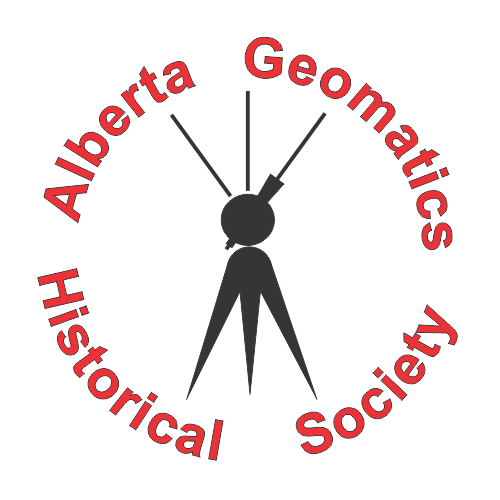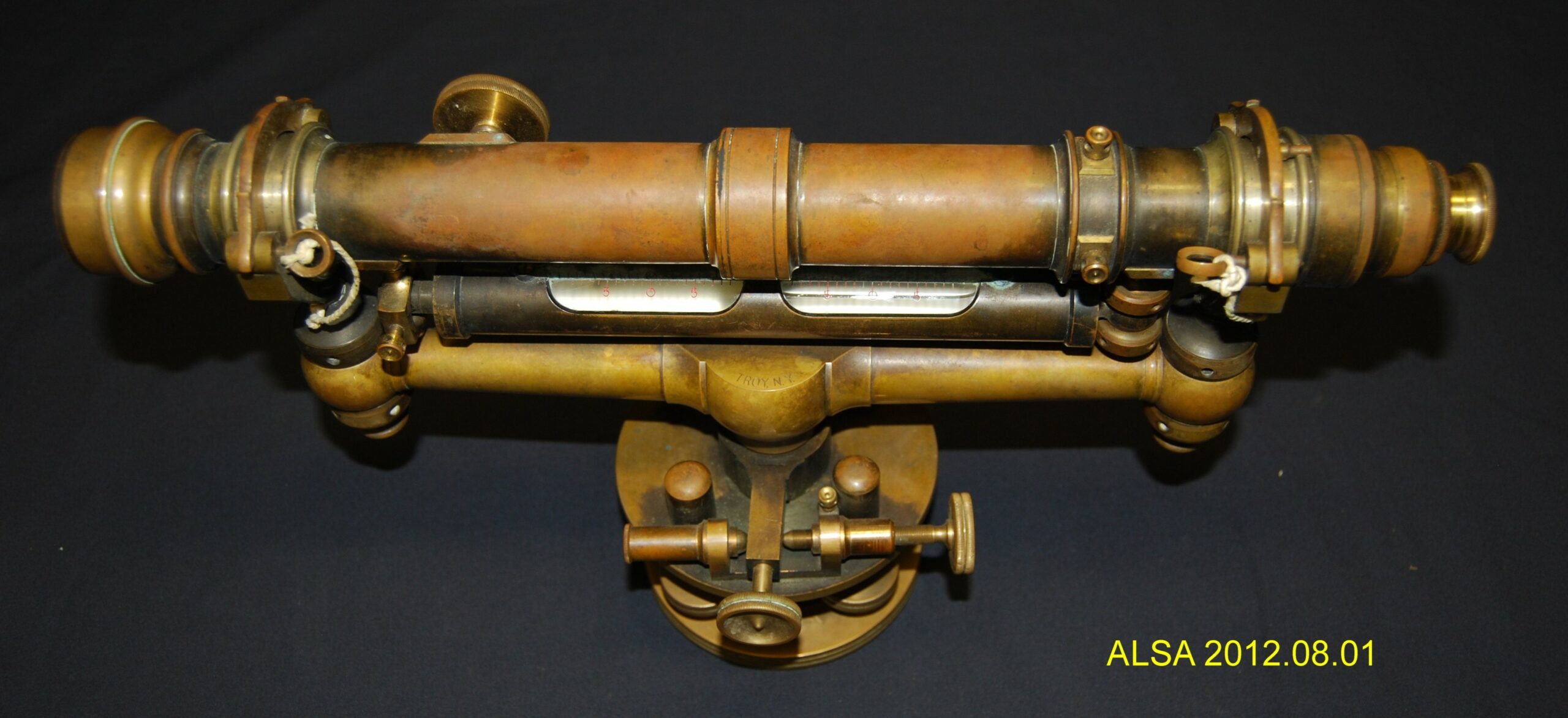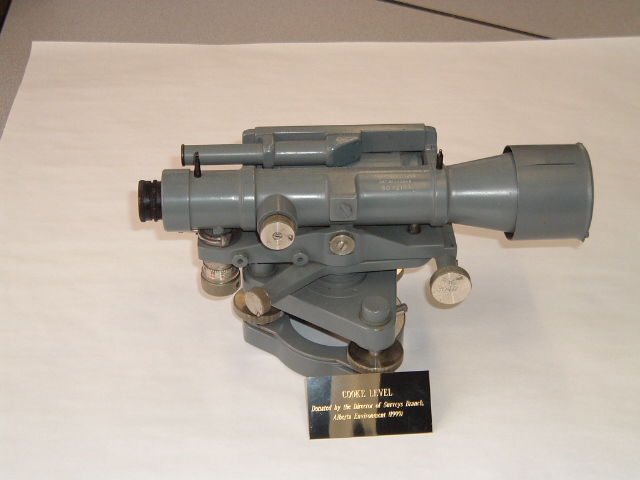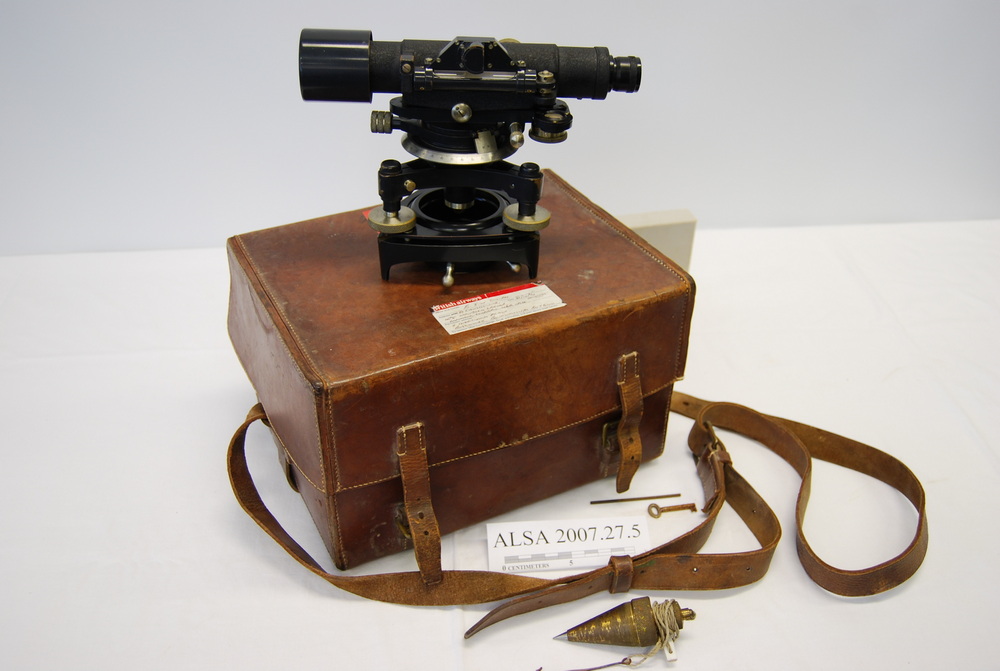Jonathan Sisson introduced a wye level in London in the 1720s. In a wye level, the supports for the telescope are shaped like the letter Y. The level will be in adjustment when the line of sight is parallel to the axis of the bubble. In a wye level the bubble is centered and the telescope is sighted on a distant target. The clips holding the telescope are then released and the telescope reversed in position (like a carpenter level). It is re-leveled and again sighted in the direction of the target. If the line of sight is on the same position on the distant target the instrument is in adjustment. If it is not the leveling screws are adjusted and the process repeated until it is in adjustment. Wye levels were preferred over dumpy levels on account of their easy adjustment and superior accuracy.
William Gravatt introduced the dumpy level in 1830. A dumpy level is fixed in its supports. Only the level bubble can be adjusted. It was purportedly called a dumpy level because its’ telescope was short and fat. In reality the telescopes for many dumpy levels were no shorter or longer than those for wye levels. The dumpy level is less precise but more rugged than the wye level.





